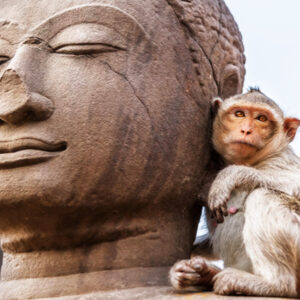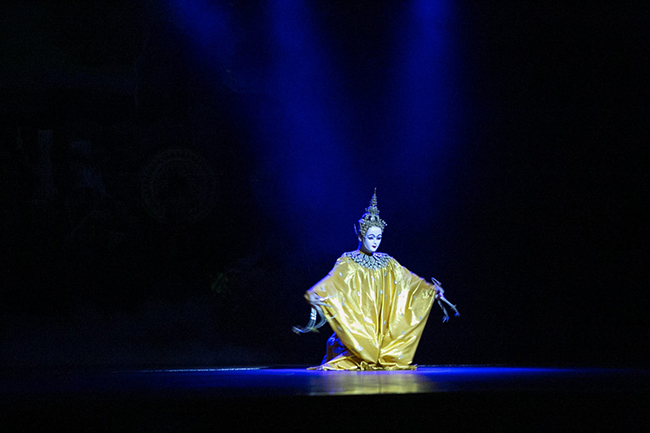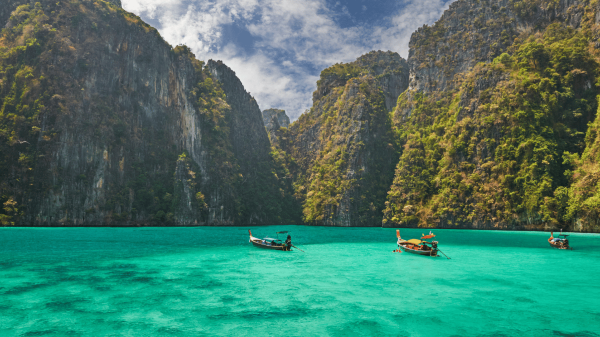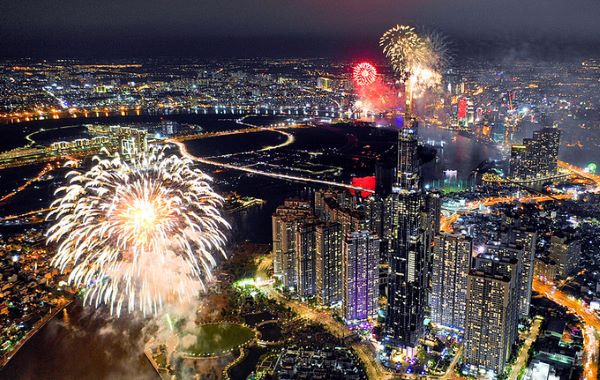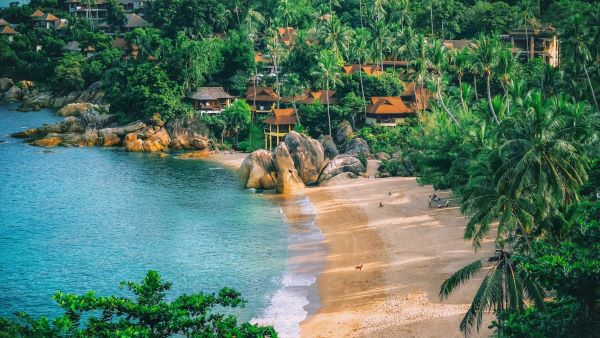The sophistication of the architecture, the exuberance of the ornamentation, the brilliance of the golds and colors, and, above all, the impression of serenity and deep spirituality that emerges from the places: the temples of Thailand have something to amaze travelers. In this 94% Buddhist country, these places of worship are part of the daily life of Thai people. They are much more crowded than our churches. Sukhothai, Ayutthaya, Bangkok… On your Thailand tours, the temples in Thailand will show you the memory of the tumultuous history of the kingdom of Siam.
1. Wat Arun – the temple of dawn, Bangkok
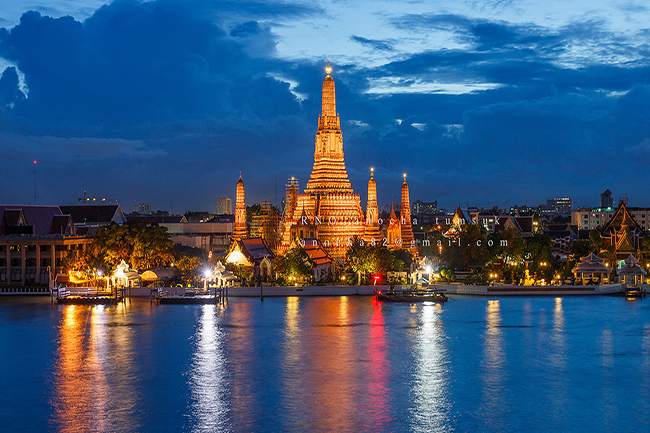
This is one of the emblems of Thailand and its capital, and one of the best temples in Thailand. Wat Arun is on the Thonburi side, on the other bank of the Chao Phraya River. The temple is named after the Hindu deity of dawn: Aruna. It commemorates the arrival of King Taksin in Thonburi in 1767.
From the prang terrace, the view of Bangkok and the Chao Phraya is magnificent. At night, the “temple of dawn” is like a mirage in the black waters of the river. You can admire it from the terrace bar of the Arun Residence hotel located on the other side of Chao Phraya. Such magic!
2. Ayutthaya, the peak of Siam

Ayutthaya Historical Park, which is located on an island at the confluence of the Chao Phraya and Pa Sak rivers, is quite extensive. It is better to travel by bicycle or motorbike. Located on the island, the Wat Phra Sri Sanphet, built in the 15th century, is the most imposing ensemble in Ayutthaya. It was the royal temple, where no monk could reside. Itschedî- pointed domes containing relics – are remarkable.
Also on the island, Wat Mahathat, totally in ruins, shelters one of the most photographed curiosities of Thailand: ahead of Buddha locked in the roots of a fig tree. Outside the island, two temples are particularly worth a visit: Wat Yai Chai Mongkhon, built in the 14th century, with its large reclining and draped Buddha.
3. Wat Rong Khun – the White Temple, Chiang Rai

This one of top temples in Thailand is located 13 kilometers from Chiang Rai in the north of the country. Immaculate white, symbolizing the purity of Buddhism, it has been under construction since 1997. This is among the top and must-visit temples in Thailand for any tourist.
Unconventional because of its whiteness, the temple, which is accessed by a bridge, is also encrusted with fragments of mirrors. Inside, naive-style murals mix Buddhist symbols, animals, and references to pop culture (Spiderman, Batman, Matrix…).
4. Sukhothai or the golden age

This is where it all started. Sukhothai was the first capital of the kingdom of Siam, liberated from the Khmer yoke. In 1238, the first organized Thai state was born there, as well as a dynasty of eight kings who reigned 150 years. A splendid period for the arts, politics, and religion.
Sukhothai, 600 kilometers north of Bangkok, is home to the most important archaeological site in Thailand, listed as a UNESCO World Heritage Site. Important by its surface, of course, but also by its historical dimension.
The fairly extensive archaeological site offers its share of marvels of stone to the amazed walker. Sukhothai invites you to daydream about the splendors of a lost civilization. Surrounded by a moat of more than a kilometer, Wat Mahathat, with its two gigantic Buddhas, was, in the time of Prince Bang Klang Thao, the temple of the royal family. It is the most important building in the historic park with dozens of prominent temples.
5. Lanna Kingdom, Chiang Mai
Chiang Mai, the northern city of Thailand, with a provincial atmosphere, was also a capital: that of the kingdom of Lan Na, at the beginning of the 14th century.
Most of the temples, accessible on foot, are in central Chiang Mai. The Wat Phra Singh (14th century) is one of the most beautiful complexes in the city. One of the buildings houses the Lion Buddha Phra Singh, a Sukhothai-style bronze statue.
Among the other temples to see, Wat Chiang Man (the oldest, founded in the 13th century), Wat Chedî Luang and its 85-meter-high chêdi, and Wat Chet Yod, a 15th-century temple with its chedi at 7 spikes.
Overlooking Chiang Mai from Mount Suthep (1,676 meters), Wat Doi Suthep Worth a trip. The panorama of the city and the plain is magnificent. The monastic complex, grouping buildings from several eras (pagodas, statues, bells, etc.), is grouped around the original chedî (14th century) covered with gilded copper. Note, a staircase of 309 steps, with its serpentine ramps, and the coexistence of Buddhist and Hindu statues – including that of Ganesh.
6. Wat Phra That Lampang Luang – a wooden treasure, Lampang

Another gem of Lanna architecture is a hundred km south of Chiang Mai. The Wat Phra That Lampang Luang (15th century) is, in itself, a reason to visit the province of Lampang, a small town in the north. It is undoubtedly one of the most beautiful temples in Thailand.
In addition to Wat Phra That Lampang Luang, the city of Lampang (15 km away) has many temples worthy of interest, witnesses of the Lan Na era, or the Burmese presence. Among these, the splendid Wat Chedi Sao which owes its name to its 20 chedîswhitewashed, or Wat Phra Kaew Don Tao that was home to the 15th century the famous Emerald Buddha (now in Wat Phra Kaew in Bangkok).
7. The Khmer citadels of Isan
Khmer civilization – and particularly Angkor – have left indelible marks on Thai culture. From the 9th to the 13th century, present-day Thai Northeast (Isan) belonged to the Khmer kingdom. Today, in the south of Isan, a region bordering Cambodia, several temples from the 11th and 12th centuries bear witness to the Angkorian era, the golden age of Far Eastern architecture.
In the province of Nakhon Ratchasima (Korat), the temple of Prasat Hin Phimai is very similar to Angkor Wat. Built a few years before the famous Cambodian temple, it even served as a model and is in a better state of conservation.
In the neighboring province of Buriram, near the Cambodian border, Prasat Phanom Rung – built on an ancient volcano – and Muang Tham evokes Khmer temples by their architecture and ornamentation.
8. Lopburi, very pious monkeys
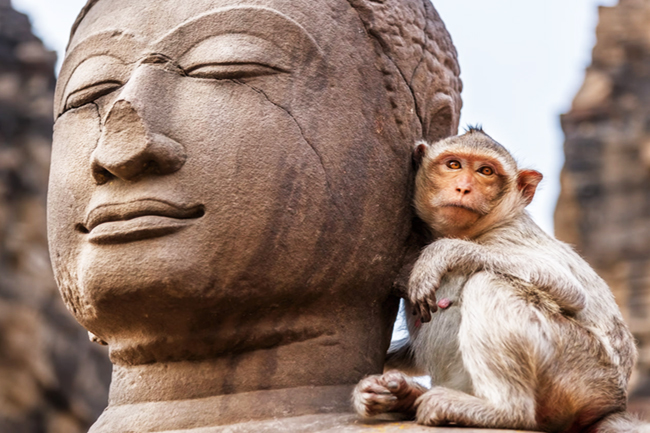
Lopburi, located 140 kilometers from Bangkok, was also part of the Khmer Empire in the 10th century. If you come by train from Bangkok, do not miss Wat Sri Rattana Mahathat, right in front of the station. This 12th-century Buddhist temple has a beautiful mainchedî of Khmer architecture. Beautiful sculptures on the central prang.
Attention, during your strolls in the corner: the monkeys are pilferers. Protect your belongings. If you’re having fun feeding them, street vendors sell seeds and bananas in the streets around.
9. Wat Phra Kaew – the jewel of the Kingdom, Bangkok

An architectural firework. A profusion of gilding, statues, earthenware, colors, and mirrors. Frescoes, gold stupas, pillars covered with mosaics, roofs superimposed on orange and green tiles. Located in the royal district of Rattanakosin and within the grounds of the Grand Palace (219 hectares), Wat Phra Kaew is the most famous Buddhist temple in Thailand and one of the most beautiful in the country.
The main building houses the most revered statue of Thai Buddhism, that of the Emerald Buddha(jade, in fact), the religious emblem of the royal dynasty. The statue, measuring only 66 centimeters, is presented on a gold pedestal, on an 11-meter high altar and under a 9-story golden parasol symbolizing royalty. The Buddha has 3 gold costumes which are changed each season by the king.
All around the temple, there are several buildings and statues representing monsters, demons with monkey heads, chimera dressed in multicolored mosaics.
10. Wat Pho – massage and reclining Buddha, Bangkok

Spanning 8 hectares on the banks of the Chao Phraya River, a stone’s throw from the Grand Palace, Wat Pho is one of the oldest Buddhist temples in Bangkok.
In the park of Wat Pho are scattered many small temples and four beautiful chedîswith slender spires, covered with ceramic and symbolizing the first kings of the current dynasty. Around the main temple are two galleries with nearly 400 seated Buddhas. The green setting reinforces the impression of serenity that emerges from Wat Pho.
Unlike Wat Phra Kaew, this site is just a tourist spot. Wat Pho is also famous for its traditional massage center where you can get a massage for a small fee from apprentice masseurs. Sessions of half an hour to an hour to leave the temple on the right foot!
11. Wat Suthat – the temple of the swing, Bangkok

A masterpiece of classic Bangkok art (known as Rattanakosin), Wat Suthat, built in the 19th century, has the largest viharn (meeting room for the faithful) in the capital. It shelters an imposing gilded bronze Buddha, 8 meters high, dating from the Sukhothai era (14th century).
The whole temple, whose cloister courtyard is covered with marble, commands respect. Please take off your shoes. Throughout the cloister, under the arches, are hundreds of images of the Buddha. Facing the temple, built in the Banglamphu district, rises a huge portico of red teak, 27 meters high: the famous “giant swing”.
12. The Grand Palace, Bangkok

This site was built in 1782 by King Rama I on the left bank of the Chao Phraya River. It houses not only the royal residence and the throne room but also a large number of government offices and the temple of the Emerald Buddha. This is one of the most famous temples in Thailand that you should visit at least once!
As the former residence of the Thai king, the Grand Palace is the most sacred place in the country. This is a temple dedicated to the Emerald Buddha, the sacred icon of Thailand, and the most important figure of the Buddha. It is a must-visit site on your Thailand tour.
Read more:

